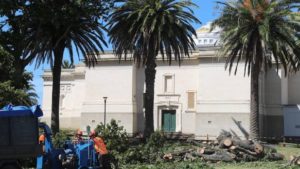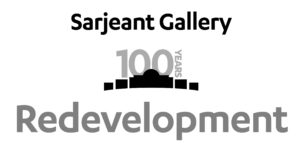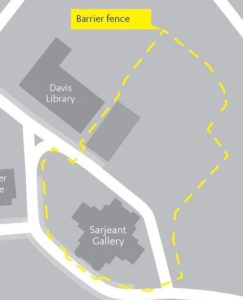17 Mar Sarjeant redevelopment: Earthworks to begin on upgrade of century-old gallery
By Whanganui Chronicle

Trees being brought down for the Sarjeant Gallery extension in Whanganui.
SARJEANT REDEVELOPMENT
With the archaeological authority granted, the Sarjeant Gallery redevelopment project can be blessed and earthworks can start.
A ceremony planned for next week to bury the Mauri Stone will bestow a blessing on the site, the buildings and the mahi work at Whanganui’s historical Pukenamu Queen’s Park.
The Mauri Stone – a taonga from mana whenua – represents the life force or the essence of the place.
The kōhatu stone comes from the Whanganui River and will be buried deep in the ground, beneath the new wing’s entrance.
The redevelopment of the 100-year-old Sarjeant Gallery involves earthquake strengthening the existing heritage building and construction of a new wing –Pataka o Sir Te Atawhai Archie John Taiaroa, named in honour of the much-loved Whanganui kaumatua.
Excavation will start nearest to the rear of the Sarjeant Gallery and move outwards towards Bell St and the mountain.

Sarjeant Gallery redevelopment
The Sarjeant Gallery is listed as a Category A building with Heritage New Zealand and is in the Whanganui District Plan’s Heritage Inventory.
The hill it sits atop, Pukenamu, is an archaeological site under the Heritage New Zealand Pouhere Taonga Act 2014. First in the works programme are the basement level foundations for the new Pataka o Sir Te Atawhai Archie John Taiaroa, where the precious Sarjeant Gallery art collection will be housed.
The project archaeologists who prepared the archaeological plan – Whanganui firm Archaeology North – will actively monitor the earthworks during the early phase when the first layer of soil is lifted.
Te Runanga o Tūpoho is also actively engaged through this process and will be on site as well. Any items recovered will be stored and managed according to the conditions of the authority.
Having removed a small stand of 1920s trees behind the Gallery in January, a fence can now be erected around the perimeter of the site.
The traffic management plan includes a new road layout around Pukenamu Queen’s Park and changes to enable construction work.
As it’s always safer for pedestrians and public parking to be completely separated from heavy vehicles, the existing library car park will be set aside for the contractor’s project office and site vehicles for the project’s duration.
The 2 metre-high fence will encompass a much wider area than the building footprint to allow for construction equipment, storage units and space for heavy trucks and vehicles to turn and load.

The proposed perimeter fence line around the Sarjeant Gallery redevelopment project at Pukenamu Queen’s Park, Whanganui. First up is breaking ground.
Mobility parks and loading area in front of the library will remain and visitors to the park and libraries will still have parking alongside the Alexander Heritage and Research Library and beyond.
Meanwhile, the final cost and programme for the Sarjeant Gallery’s restoration is awaiting Auckland University’s impending seismic strengthening solution peer review.
Peer reviews can be an iterative process but by splitting the consent for the building work into two, we can move ahead with construction of the new wing.
•Gaye Batty is Project Director at the Sarjeant Gallery.
Click here to see the original article at nzherald.co.nz

